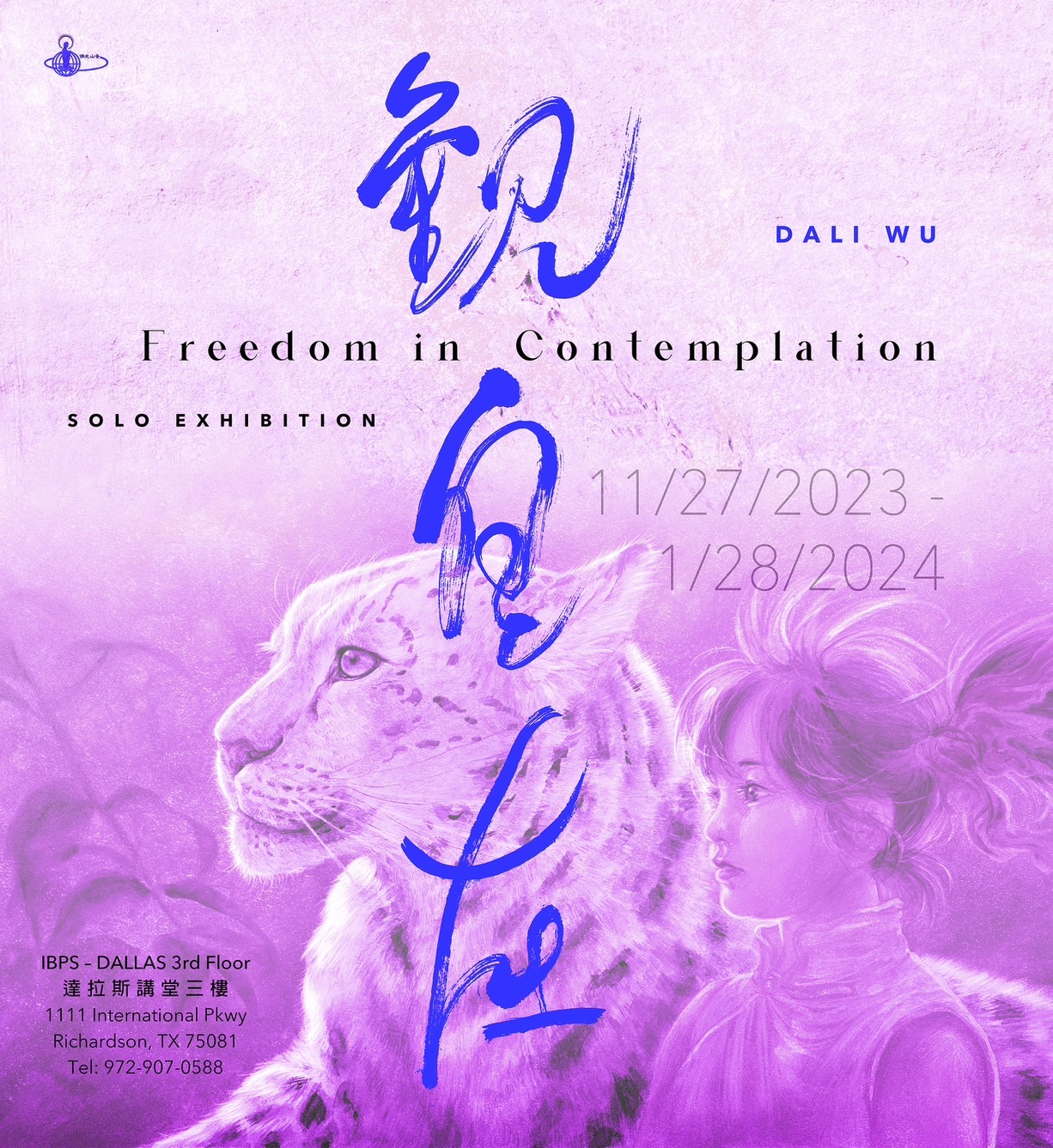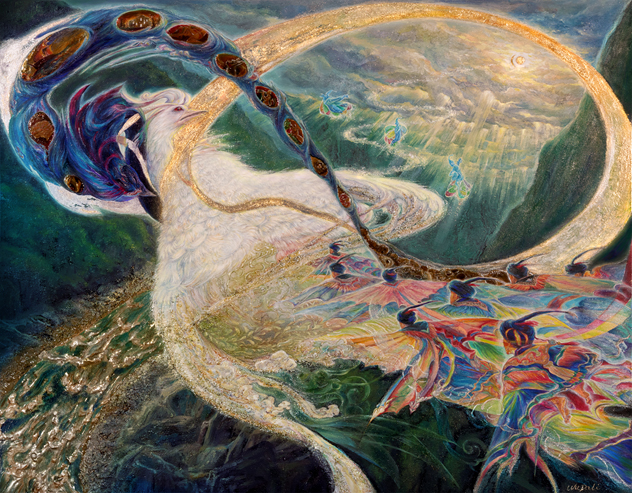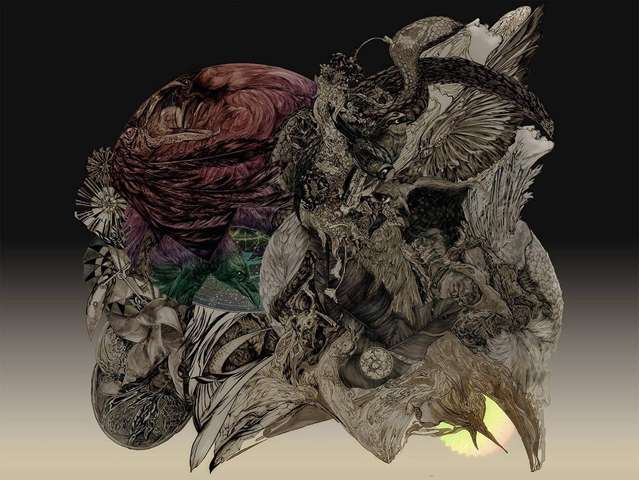Dates: |
11/27/2023 ~ 1/28/2024 | ||
Time: |
9:30am ~ 5:00pm | ||
Artist: |
Dali Wu, Bio | ||
Venue: |
3rd Floor - GuanYin Shrine |
||
Works: |
Mixed media on wood panel. oil paint, watercolor, resin, plaster, glass, gold and silver leaf, gold and silver powder. 59 X 72.5 cm. 2020 Above the Nu River Grand Canyona pair of white and black birds form an infinite shape; they are legendary "biyi birds," also known as birds flying wing to wing. The biyi bird is a one-eyed, one-winged mythical creature in which each entity is half of a bird, such that only when a male and female pair up and fly together, can they become a whole bird. It later become a metaphore for a loving couple. According to legend, there are still flying villagers on both sides of the canyon who live in a paradise-like harmony with nature, allowing them to fly and join the legendary biyi birds. The celestial sky, where the sun and moon shine together, resonates with the wondrous sound of Kalaviṅka descending from above, flowing into the turbulent Nujiang River after passing through the biyi birds. Originally a metaphor for loving couples, the biyi birds here are depicted in the form of Jīvajīvaka, where the white bird gazes towards the sun and moon, while the black bird is intertwined with the twelve links of dependent origination. The texture under the white bird is outlined with plaster, considering the local characteristics of Yunnan cloth patterns. The white bird's chiffon skirt is portrayed like a wedding dress. In Buddhism, there is a fable of the "Jīvajīvaka bird," recorded in the Vinayavastu of the Mūlasarvāstivāda Vinaya. The bird is also known as mingming niao in the Nirvana Sutra, shengsheng niao in the Pravara-deva-raja-pariprccha Sutra, and gongming niao in the Shorter Sukhāvatīvyūha Sūtra and the Miscellaneous Treasures Sutra. The fable depicts the entanglement of Dharma (the order that makes life and universe possible) and Adharma (disharmony, unnaturalness) life after life. The story tells of a bird named Jīvajīvaka, with one body and two heads named Dharma and Adharma. They eat fruits together, but when one eats something tasty without waking the other, conflict arises. In a tragic turn, both birds eat poisoned fruits and die. Before dying, Adharma vows to harm Dharma in every future life, while Dharma wishes to be friends forever. The eternal perplexity within human emotions and the true key to liberation is fully embodied in this Jīvajīvaka fable.
It is always hard to ask their souls to stay behind (version II)Mixed media on canvas. Acrylic, resin, watercolor, ink, and digital techniques. Created between 2014 and 2017. Dimensions 83.5 x 67 cm “Yukio Mishima once said: “Every human has only two possibilities: either to remain strong and upright or to kill himself.” Can I — if I may — interpret the second case as “giving in to the death”? |
||


